What Are Position Trading and Swing Trading?
Position Trading and swing trading are two trading styles or approaches, which are slightly different, but at their core very similar. In this articlewe will look at how position trading and swing trading work, why these trading styles are important and what the best position trading and swing trading strategies are. As well as trading styles we also have multiple articles on technical analysis.
How Do Position Trading and Swing Trading Work?
Position trading is usually defined as a holding a position in the direction of the primary trend, on a short-term or intermediate-term basis, usually as defined by a daily chart. There are many different trading styles and strategies that can be used with position trading, which we will look at here in more depth. Usually, position trading would mean holding positions in a market for at least a couple of days, but more likely for multiple weeks.
Swing trading is related to position trading (lie a cousin), but with swing trading you would look to benefit from the swings within the primary trend, in both directions. Usually, swing trading is done on a near-term basis, as opposed to an intermediate-term timeframe. Again, as with position trading, there are many different ways to approach your swing trading set ups and tactics. Usually, swing trading would mean holding positions in a market for maybe a couple of days, out to possibly 1-2 weeks.
The main differences between swing a position trading are:
- Position trading is seen as entering trades in the direction of the primary trend, whereas swing traders looks to benefit from each swing within the primary trend.
- Position trading is usually seen as entering trades on a short- to intermediate-term basis, for at least a couple of days (more likely for a week or more), potentially for multiple weeks. Swing traders usually enter trades on a short-term basis, maybe just for two or three days, possibly for 1-2 weeks, but not usually much longer.
Why Are Position Trading and Swing Trading Important?
Position trading and swing trading are important trading styles to be aware of as they are often the very popular with individual traders. This is because these trading styles do not need constant monitoring, which allows you to have more freedom. You can be a position trader or swing trader whilst still maybe working a fulltime job or pursuing other ventures.
What are the Best Position Trading and Swing Trading Strategies?
The best position trading and swing trading strategies include:
- Breakout Trading
- Pullback and Retracement Trading Strategy
- Range Trading
- Support and Resistance Trading
- 50 Day Moving Average Trading
- Reversal Trading
- Trend Trading
- Breakdown Strategy
Although some of these styles are quite similar, we will look at each of these in turn.
Breakout Trading
We looked at breakout trading in depth in our article What Are Trend Lines and Breakouts In Trading? Breakout trading can be used in both position and swing trading, when markets move from being in a range or consolidation and then start a new trend, either with a bullish or bearish breakout. On a bullish breakout, a position or swing trader would enter long and with a bearish breakout, a short position would be opened.
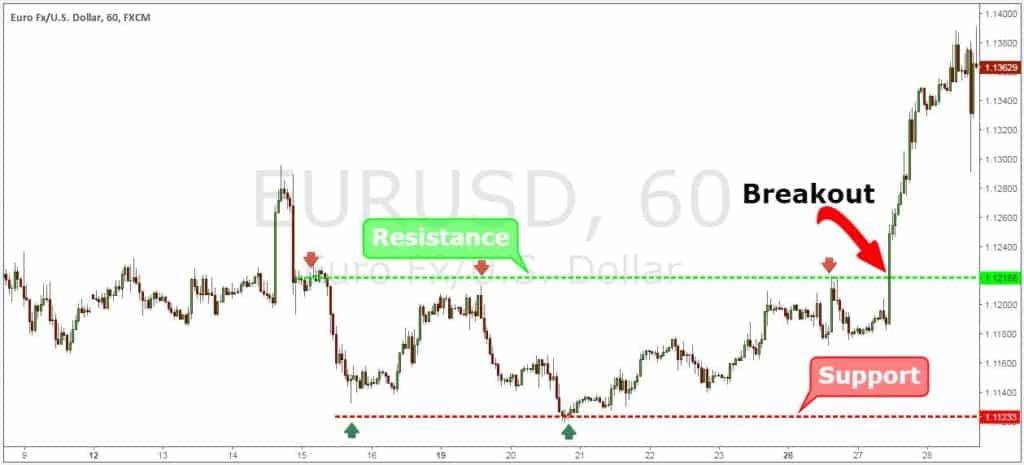
Pullback and Retracement Trading Strategy
Pullback and retracement trading strategy would be more suited to the position trader. If the market was in a primary bull trend (up trend) and then started to correct lower, to pullback or retrace, the position trader would then look to buy after the market had maybe retraced a certain amount, maybe using Fibonacci retracements.
If the primary trend was down, then a pullback to the upside or retracement would then offer an opportunity to enter shorts.
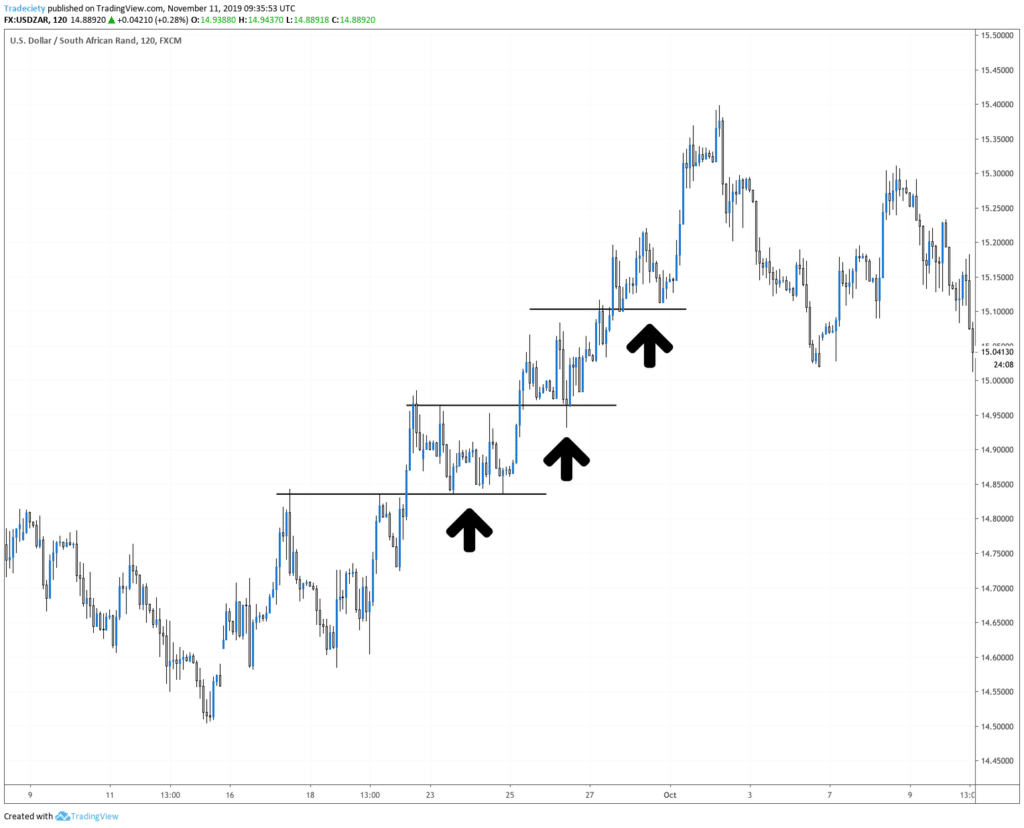
Range Trading
Range trading would be more suited to swing trading, rather than position trading. This is because when a market is in a range (or non-trend,) there is no primary trend for the position trader to trade with. The swing trader, however, can trade the range, selling swings to the top of the range and buying swings to the bottom of the range.
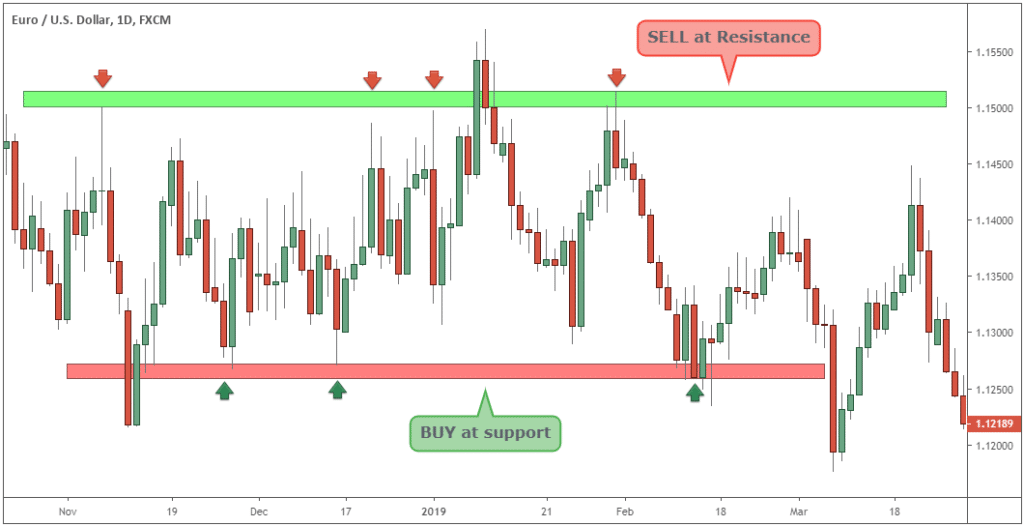
Support and Resistance Trading
We looked at support and resistance in trading in our article What is Support and Resistance In Trading? and a recap of this article would be useful.
Let’s looks at support and resistance from the viewpoint of a position trader. If the market is in a primary up trend and the market starts to correct back lower, the position trader would look to identify support levels at which to possibly buy to enter long positions in the direction of the primary trend. The opposite would be true in a down trend, looking to sell rebounds towards resistance.
From a swing trade perspective, the swing trader would look to sell and enter short if the market breaks notable support levels, then look to buy back as next supports were reached, or if the market moved back above resistance.
The opposite is also true, for a swing trader is resistance was broken, the swing trader would buy and look to exit wither when next resistance was hit, or if support was then broken.
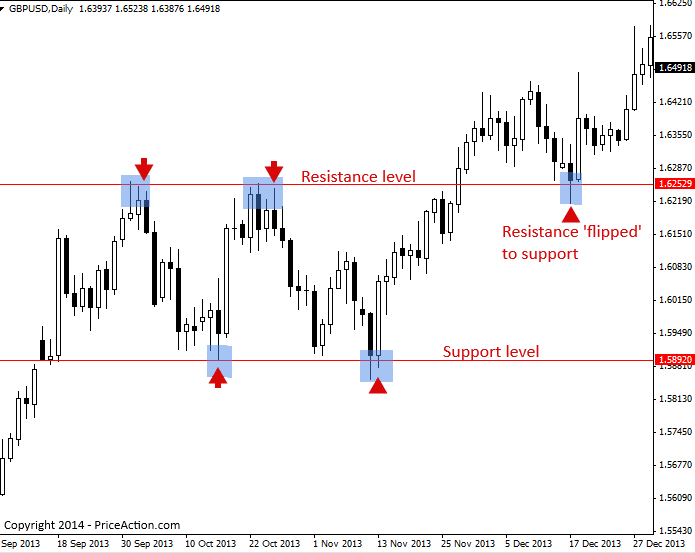
50 Day Moving Average Trading
50 day moving average trading is a short-term to intermediate-term trading strategy that can be used by both position traders and swing trader alike. The strategy places the 50 day moving average trading (usually the simple moving average) at the core of the trading system. The idea is that the 50 day moving average is a good indicator of the intermediate-term trend, so a position trader would look to trade with this indicator. This would mean being long when price is above the 50 day moving average and short when price is below the 50 day moving average. Swing traders would use this moving average to enter swing trades too. Sometimes, the 55 day moving average is used instead, as 55 is one of the Fibonacci sequence of numbers.
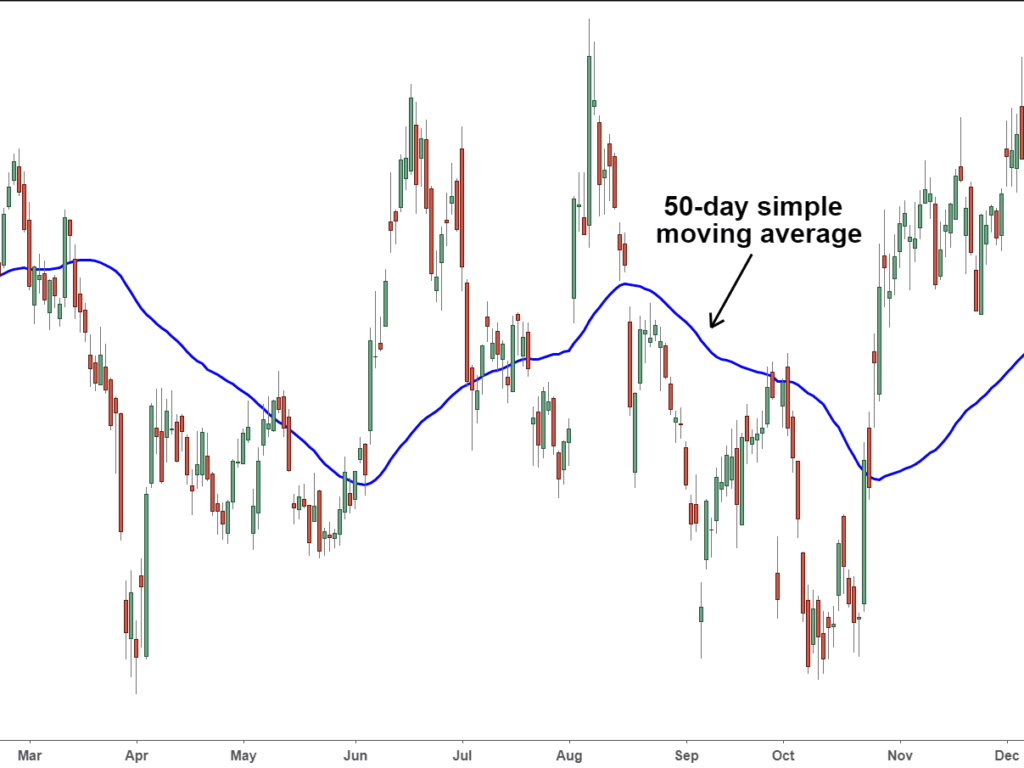
Reversal Trading
Reversal trading is when a position trader and/ or swing trader enters a position on the reversal of a trend. For a position trader, this would mean looking for signals that the primary trend (usually on the daily chart) was reversed. This could be signalled by a break of an important moving average (as in the 50 day moving average as highlighted above). Or it may be by using a trend line or Dow Theory reversal. A swing trader would usually look for more short-term term reversals in the swings within the primary trend.
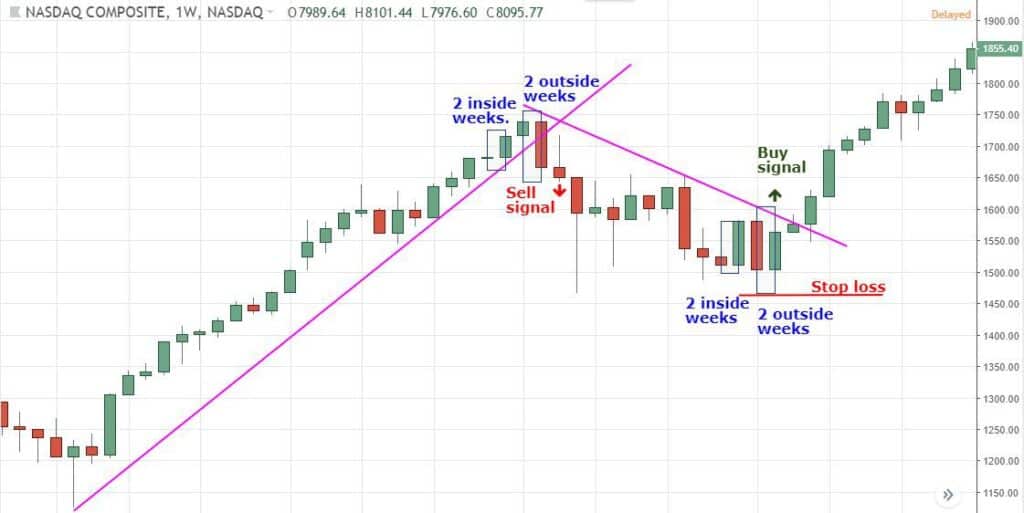
Trend Trading
Trend trading is looking to trade in the direction of the trend and would look to use maybe trendlines as we have looked at in in our article What Are Trend Lines and Breakouts In Trading? Or maybe you could use moving averages or channel indicator we explored in our article What Are Trading Channels? In either instance, trend trading is more aligned with position trading, though it could also be seen as part of swing trading too.
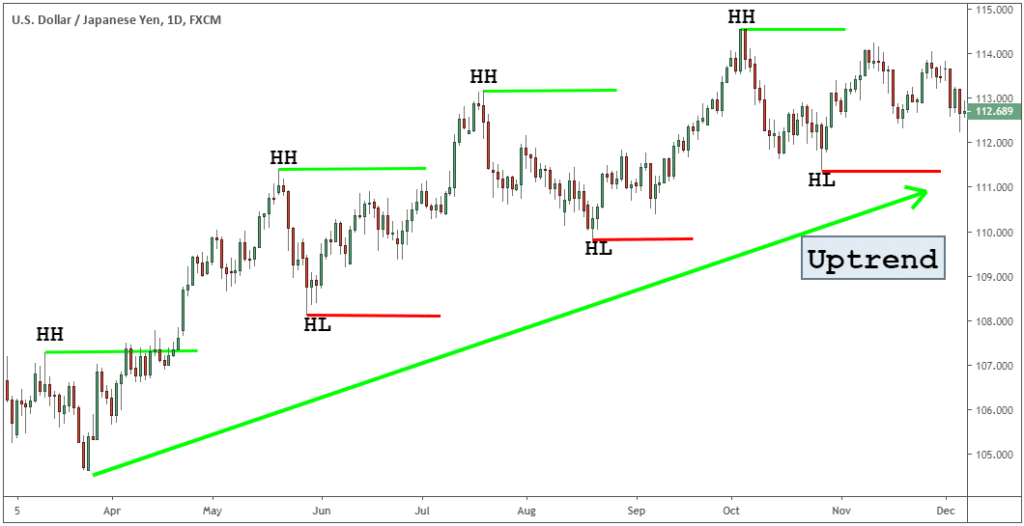
Breakdown Strategy
Breakdown Strategy is effectively the same as breakout trading, but when the market in question breaks down, lower from a trading range (or possibly from an upward trend). This might be signalled by a topping pattern, like a Head & Shoulders Top or a Double Top.
Breakdowns are sometimes highlighted as a separate strategy, particularly in stock trading, as investors are on the whole mostly “long only”, that is they own the securities. For a position trader or swing trader, a breakdown should be viewed the same as breakout trading.
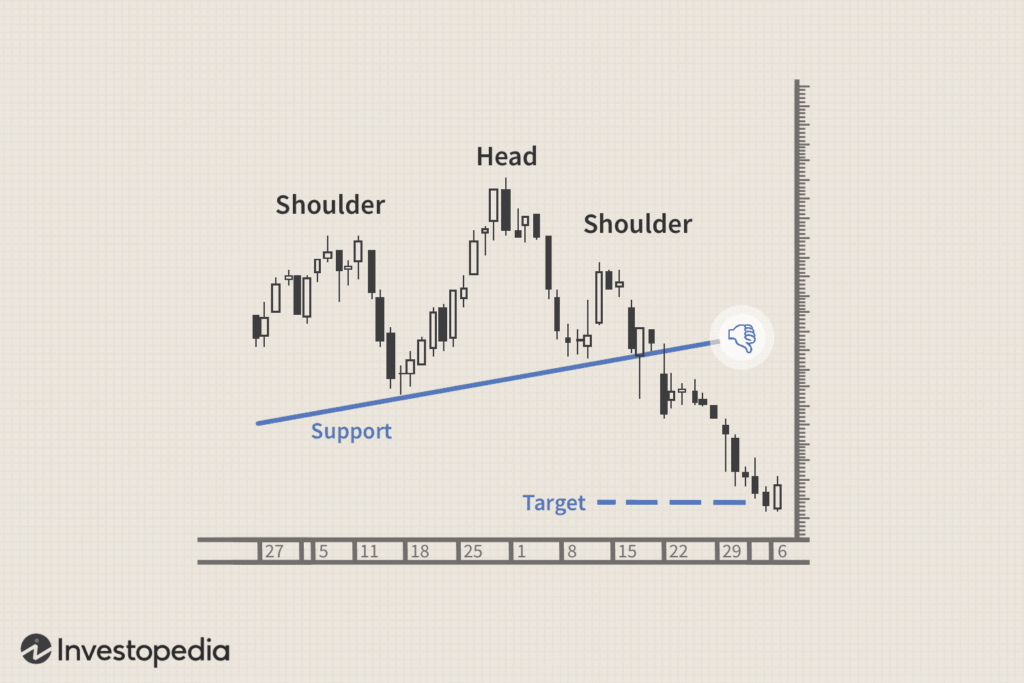
Position Trading and Swing Trading Summary
The key takeaway from this articleis that both swing trading and position trading allow allows you to have more freedom as a trader. This is because both trading styles are possible without you, the trader needing to constantly monitor your trades.
Yes, the initial analysis needs to be done and needs to be done thoroughly. But once trade set up is done, it is a matter of placing the order with entry point, target and stop-loss, and then to some extent, walking away. Yes, risk management is still vital and needs to be done, but this maybe just require setting alerts and updating from a mobile device.
Another key takeaway, is that there are many trading styles that suit both the swing trading and position trading, allowing you to be able to experiment with different strategies, to find one that fits you best.
We have looked at the various types of position and swing trading and how they work, including breakout trading, pullback and retracement trading strategy, range trading, support and resistance trading, 50 day moving average trading, reversal trading, trend trading and breakdown strategy.
We have also highlighted why these styles are important to you as an individual trader, because they allow you your freedom. You can be a position trader or swing trader in you spare time.